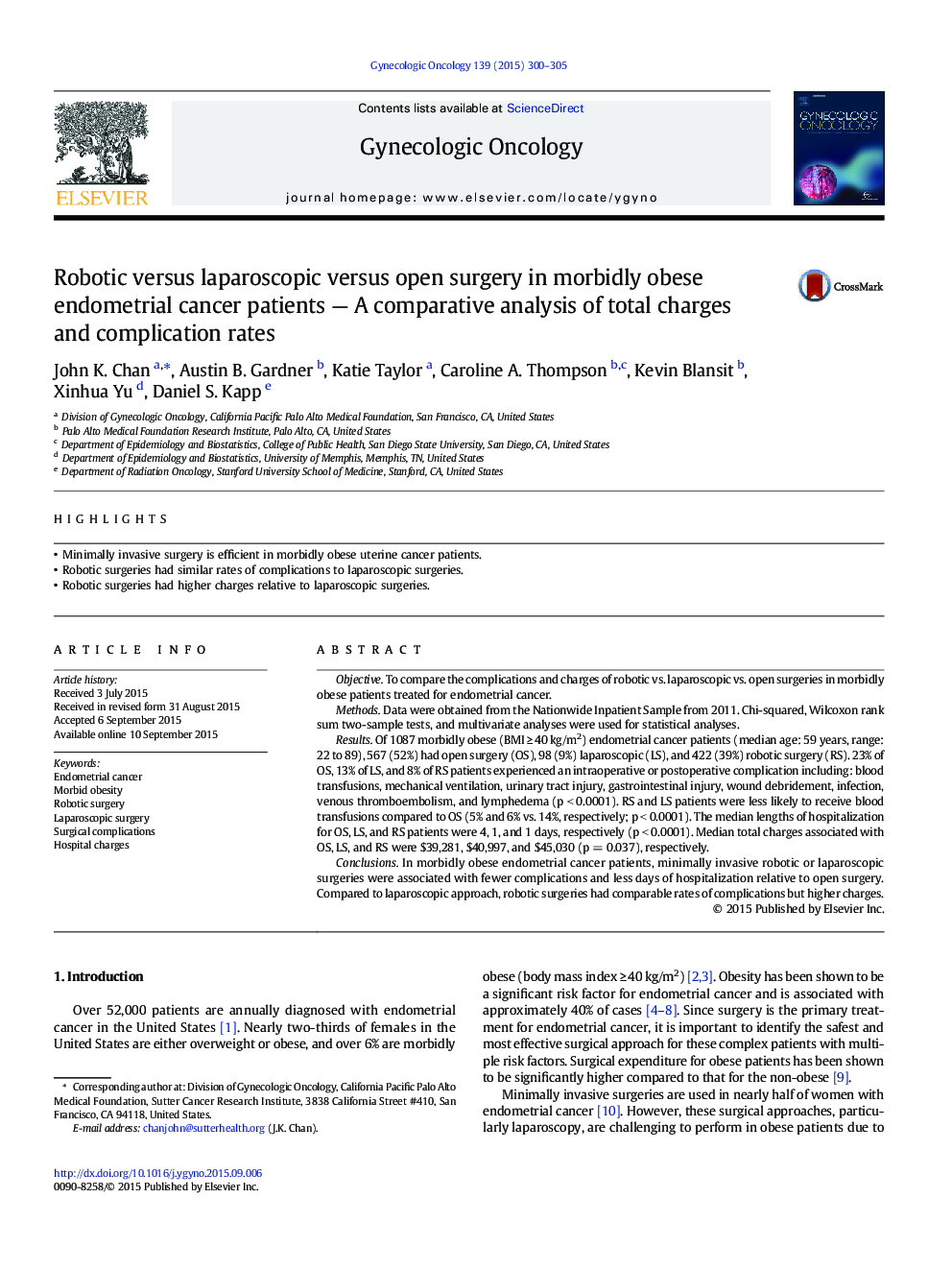| Article ID | Journal | Published Year | Pages | File Type |
|---|---|---|---|---|
| 3943061 | Gynecologic Oncology | 2015 | 6 Pages |
•Minimally invasive surgery is efficient in morbidly obese uterine cancer patients.•Robotic surgeries had similar rates of complications to laparoscopic surgeries.•Robotic surgeries had higher charges relative to laparoscopic surgeries.
ObjectiveTo compare the complications and charges of robotic vs. laparoscopic vs. open surgeries in morbidly obese patients treated for endometrial cancer.MethodsData were obtained from the Nationwide Inpatient Sample from 2011. Chi-squared, Wilcoxon rank sum two-sample tests, and multivariate analyses were used for statistical analyses.ResultsOf 1087 morbidly obese (BMI ≥ 40 kg/m2) endometrial cancer patients (median age: 59 years, range: 22 to 89), 567 (52%) had open surgery (OS), 98 (9%) laparoscopic (LS), and 422 (39%) robotic surgery (RS). 23% of OS, 13% of LS, and 8% of RS patients experienced an intraoperative or postoperative complication including: blood transfusions, mechanical ventilation, urinary tract injury, gastrointestinal injury, wound debridement, infection, venous thromboembolism, and lymphedema (p < 0.0001). RS and LS patients were less likely to receive blood transfusions compared to OS (5% and 6% vs. 14%, respectively; p < 0.0001). The median lengths of hospitalization for OS, LS, and RS patients were 4, 1, and 1 days, respectively (p < 0.0001). Median total charges associated with OS, LS, and RS were $39,281, $40,997, and $45,030 (p = 0.037), respectively.ConclusionsIn morbidly obese endometrial cancer patients, minimally invasive robotic or laparoscopic surgeries were associated with fewer complications and less days of hospitalization relative to open surgery. Compared to laparoscopic approach, robotic surgeries had comparable rates of complications but higher charges.
